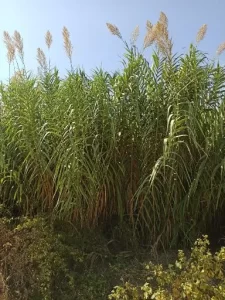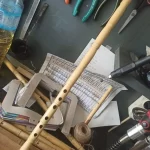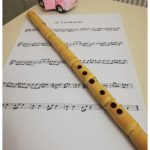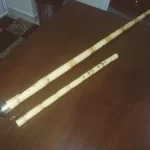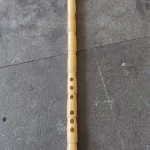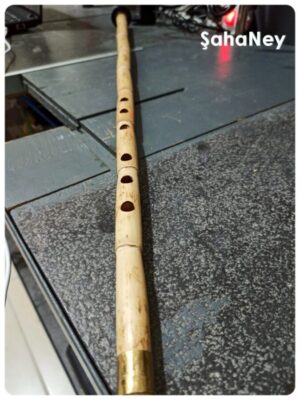How Do We Manufacture?
The main material of ney is reed. It is not easy to find a suitable reed for ney making. Because there are not many short-knuckled reeds required for making ney. Manufacturing a ney is primarily started by obtaining suitable reeds (arundo donax). The reeds are cut and dried under appropriate season and weather conditions for this job. When choosing a reed, care is taken to ensure that the outer enamel is hard and shiny. The selection and drying of the reeds with suitable diameters and feature greatly affect both the sound and the aesthetic structure of the ney.
How to do ney?
Suitably dried straws are adjusted to the required size for whatever main sound is requires (approximately with one more knuckle above and one more below knuckle). The bark and knots of the reed are cleaned properly. If there is a curvature in the reed, the reed is heated to make it straight. The inside of the straightened reed is cleaned using appropriate equipment and the knuckle, which is called a sound box, is opened in appropriate sizes. The sound of the ney is measured with a suitable tuning device and the length of the ney is adjusted by shortening it to give sound at the right frequency. After the size of ney comes in the appropriate chord, the note holes are opened (smaller than they should be) by burning or piercing. Since there is a mistake in the holes will directly affect the accord of ney, it should be worked carefully while drilling the holes. Then, the roughness in the holes are cleaned with the help of sandpaper. The upper end of the reed is shortened to the size of the başpâre to be attached, and both ends are smoothed by sanding.
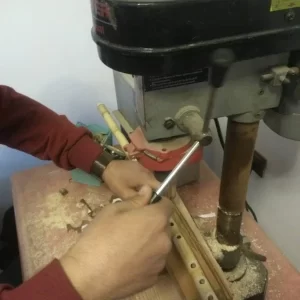
Metal rings (to prevent the reed from cracking) made of suitable metals (such as silver, German silver, alpaca, brass, copper) and called parazvane are attached according to the diameters of the lower and upper ends of the reed. Parazvanes should be made of metals with a thickness of 0.30 - 0.40 mm in order not to distort the timbre of the sound. After the Parazvanes are attached, başpâre made of preferably the buffalo horn or the suitable materials (ivory, derlin, wood, plastic) is attached. Başpâre is attached to obtain a clean sound and to prevent possible damage to the lips. Later, the ney manufacturer checks the sound adjustment (tuning) of each hole. The holes that are not tuned are shifted up / down to the appropriate direction, and the tuning is completed by expanding the holes with hot iron. Ney is cleaned for the last time and the knots are filled by dripping natural beeswax. After all these processes; It is immersed in a tank filled with proper oil (cotton, almond, sesame, hazelnut oil, etc.) and left for a few hours (How to Lubricate Ney?), then being removed from the tank the oil is drained and the excess oil on it to be dried with a clean and soft cloth.
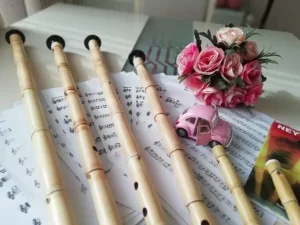
Ney is now ready to meet with the breath of its new owner.
"It is the work determining how better the person is, not the sayings,
The visible mental rank of the person is in his work"ZIYA PASHA

